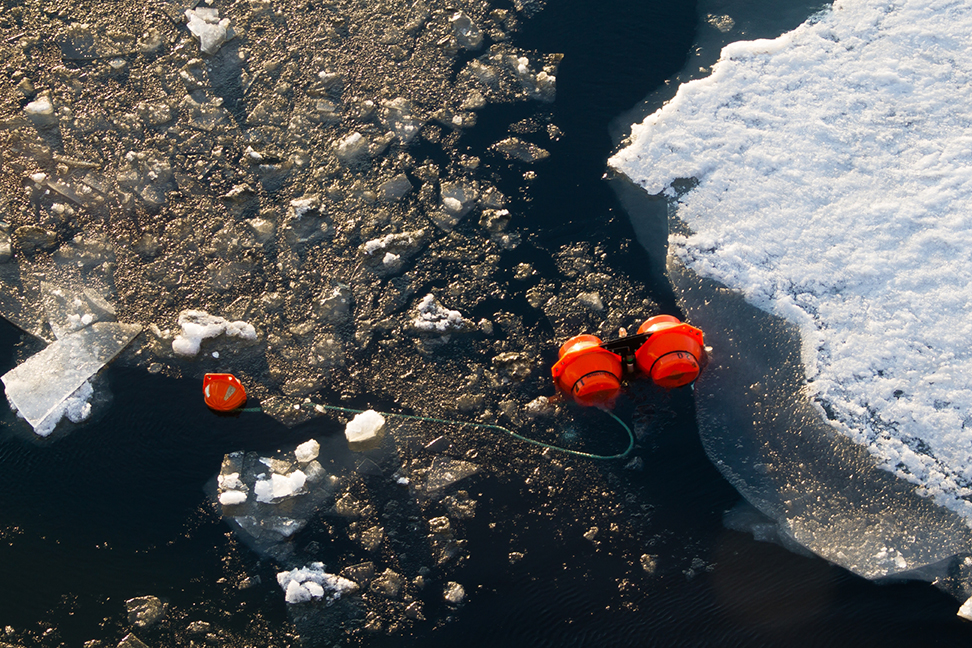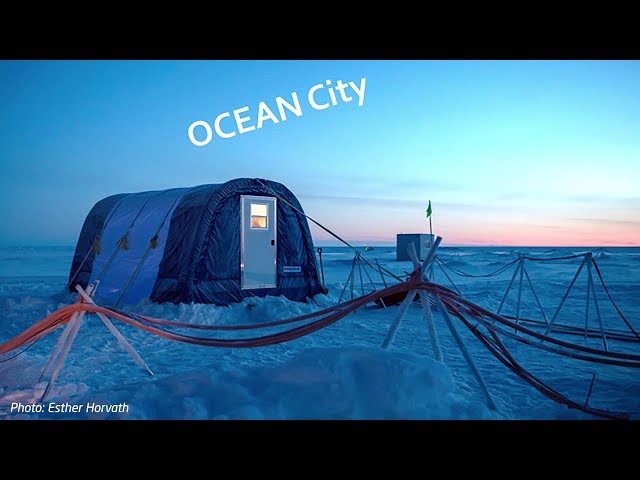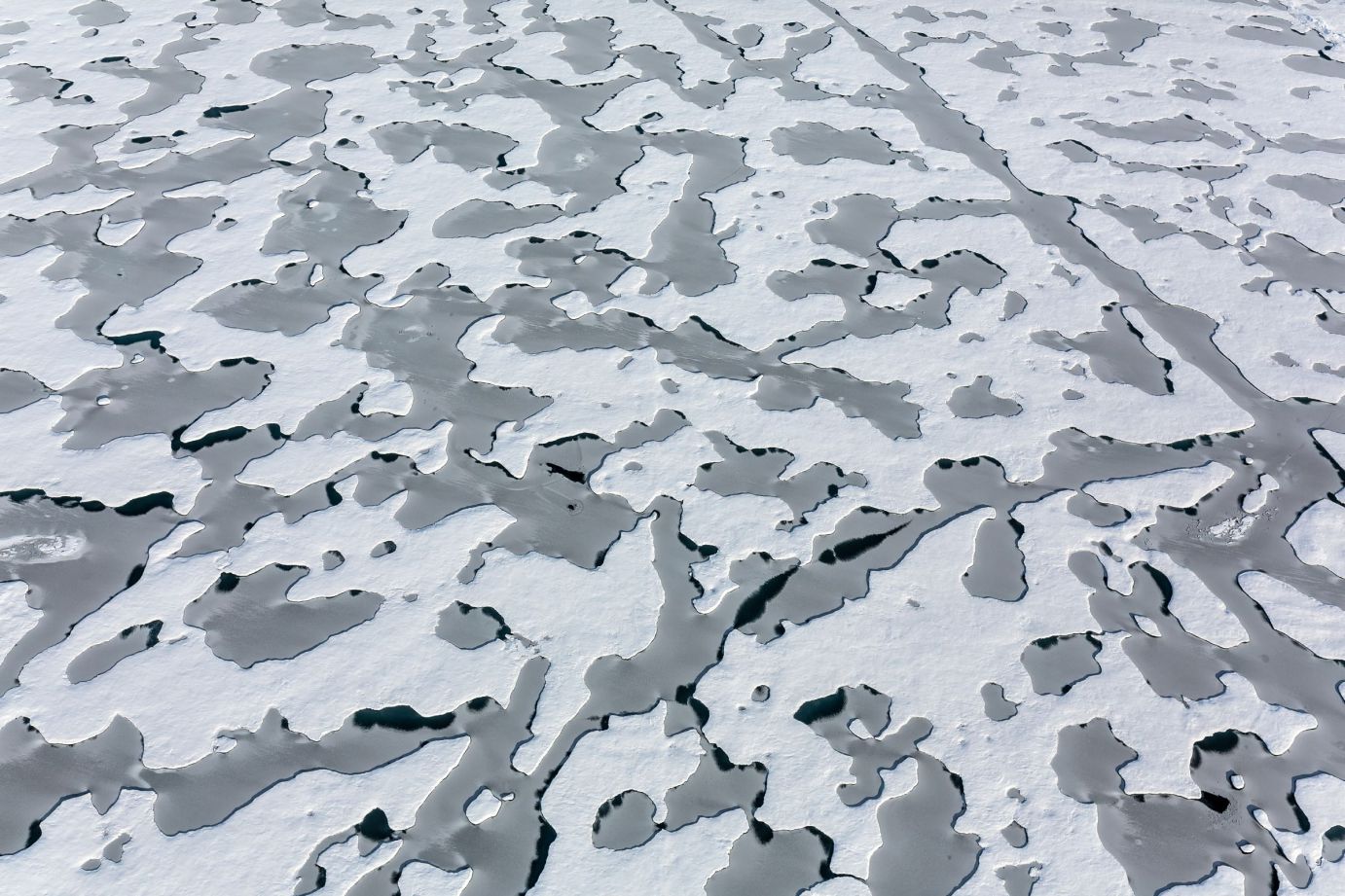
Over the past several decades, researchers have repeatedly surveyed the Arctic Ocean and e.g. the water temperatures or currents at various depths. Yet these research efforts largely consisted in rare visits with icebreakers or brief research flights in the summer months. Accordingly, most data was gathered during just a few (summer) months. During the MOSAiC expedition, the ocean experts will for the first time be able to monitor a broad number of physical parameters over the course of an entire year – on board the Polarstern, in the surrounding ice camp, or in the 100-kilometre-wide distributed network set up on the ice floe.
One of MOSAiC’s central research objectives is to arrive at a better understanding of how the sea ice is evolving.
Consequently, the MOSAiC oceanographers’ investigations will especially focus on ocean circulation in the upper water layers: on the large-scale circulation of ocean currents, which transport tremendous amounts of water into and out of the Arctic.
In comparison to the Arctic atmosphere – which can drop to minus 30 or even minus 40 degrees Celsius in winter – the ocean is relatively warm: since it never gets colder than ca. minus 2 degrees Celsius, it essentially works like a giant hot plate for the Arctic. Thanks to ocean circulation, heat and energy build up, and because turbulences in the water transport them from the lower water layers to the sea ice at the surface, they also warm the Arctic atmosphere.
With these aspects in mind, the MOSAiC team will on the one hand focus on the deep sea and its currents, e.g. their temperature, salinity and speeds. On the other, the experts will explore those ocean processes that take place near the ice and affect it: what happens to the ice when heat from deeper ocean layers flows upward? And what effect does this have on the energy balance in the Arctic? To gather comprehensive data, the specialists will conduct a range of additional tests in order to determine e.g. the role of sunlight absorption in connection with processes in the Arctic’s ocean / sea ice / atmosphere system. Another element they’ll be looking into: how intensively the water is occasionally agitated, transporting heat and nutrients to the uppermost water layer below the ice in the process.

By loading the video, you agree to YouTube's privacy policy.
Learn more
 Eddies are a perfect example of the research conducted by the OCEAN Team: eddies are large-scale gyres, similar to high-pressure and low-pressure cells in the atmosphere, which we’ve all seen on weather maps. They can transport warm or nutrient-rich water into and through the Arctic. Given the interconnections between the atmosphere, ice, and water, MOSAiC will take a closer look at these currents below the ice. The scientific community already knows that in the deep sea, comparatively warm water from the Atlantic flows into the Arctic. Once there, it is covered by a layer of cold, low-salinity water, which prevents heat from the depths from reaching the sea ice or the atmosphere.
Eddies are a perfect example of the research conducted by the OCEAN Team: eddies are large-scale gyres, similar to high-pressure and low-pressure cells in the atmosphere, which we’ve all seen on weather maps. They can transport warm or nutrient-rich water into and through the Arctic. Given the interconnections between the atmosphere, ice, and water, MOSAiC will take a closer look at these currents below the ice. The scientific community already knows that in the deep sea, comparatively warm water from the Atlantic flows into the Arctic. Once there, it is covered by a layer of cold, low-salinity water, which prevents heat from the depths from reaching the sea ice or the atmosphere.
Part of the research efforts during the MOSAiC expedition will focus on whether (and if so, when) the cold surface water and the deeper water intermingle. In this regard, the ocean experts will collaborate with their colleagues from the Biogeochemistry Team, who will measure trace substances that can be used to determine the origin of a given water mass – e.g. the deep sea or melting ice. In addition, they’ll work with peers from the Ecology Team to measure the amount of nutrients that can be transported to the upper water layer from below in the course of the winter.
 The one-year-long MOSAiC expedition will also offer the ocean researchers the unique opportunity to take measurements spontaneously; for example, when a storm gathers, scattering the sea ice. Normally the sea ice protects the warmer water from the frigid polar air. But when the ice is broken up, there’s no buffer between the atmosphere and water, which can affect processes in the ocean: the wind can churn up the seawater, causing the layers to mix. Sudden chilling or ice formation can make the water colder or brinier – and therefore heavier! Whether or not the wind energy or the cooling / increased salinity is enough to allow warm and nutrient-rich water to reach the surface in such cases is one of the open questions that the MOSAiC researchers will seek to answer.
The one-year-long MOSAiC expedition will also offer the ocean researchers the unique opportunity to take measurements spontaneously; for example, when a storm gathers, scattering the sea ice. Normally the sea ice protects the warmer water from the frigid polar air. But when the ice is broken up, there’s no buffer between the atmosphere and water, which can affect processes in the ocean: the wind can churn up the seawater, causing the layers to mix. Sudden chilling or ice formation can make the water colder or brinier – and therefore heavier! Whether or not the wind energy or the cooling / increased salinity is enough to allow warm and nutrient-rich water to reach the surface in such cases is one of the open questions that the MOSAiC researchers will seek to answer.